Living on Earth is expensive, but it does include a free trip around the sun every year. – Unknown
Strangers sometimes respond with shocked faces upon learning that I am a permanent traveler, that I am not going back to the United States. I guess it’s not your usual lifestyle at 21 years-old.

Life on the road is a constant doling out of cash. Nearly every day, you’re pulling money out for food, a bed, and transportation. Without an apartment, there’s no such thing as going to the store for the week to stock up the fridge and pantry. Travelers have neither fridge nor pantry.
As I watch my money go to this and that each day, I sometimes feel that I must be spending a small fortune. But let’s remember what travelers don’t have while living on the road. I, for example, have no house, no car, no phone, gym membership, closet, or stove. I have no bills. What I do have must fit in my backpack and what fits in my backpack must be carried. Not ending up like overly-burdened Cheryl from Wild creates a heavy incentive towards minimalism.
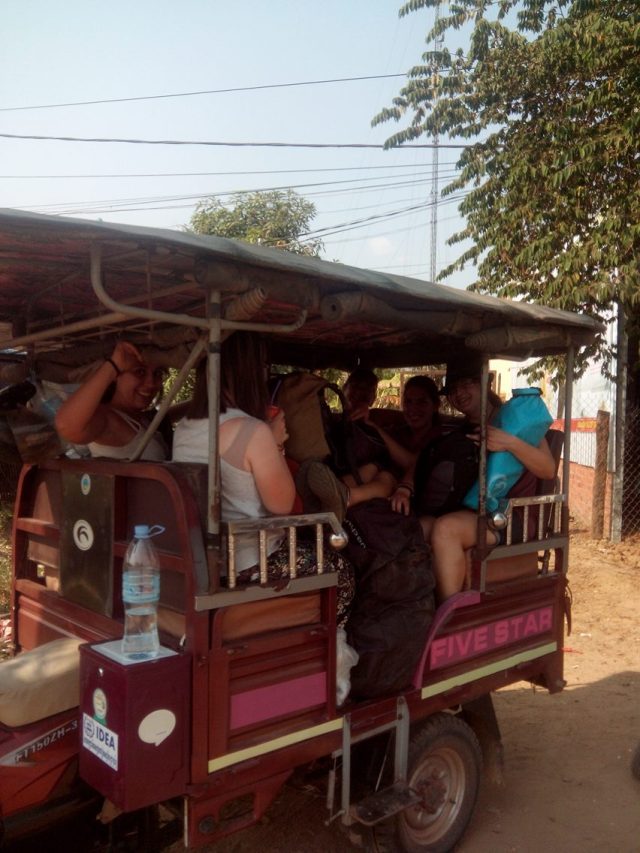
Without being tied to any rent or payment plans, I’m free to forage through the market and take full advantage of location-based opportunities. Bangkok was great for seeing the dentist because they are professional and cheap there. However, glasses were priced outrageously, but could be found in Malaysia much more affordably.
Herein lies the art of budget long-term travel.
Your average Joe doesn’t have a small fortune to travel with. He has instead a steady job to maintain a steady life. The advantage and freedom of long-term travel resides in the ability to save. Some rent out their flats or swap-homes while they are away for several months. Some just up and sell everything they have- like me! Either way, a dire drain on the budget for short-term travelers comes from paying a fixed rent at home as well as accommodation costs while abroad. There’s nothing more potent to financial freedom than saving. I save by spending less on day to day needs than I would likely be spending at home.
When people ask how I can afford to travel as long as I do, I usually start by saying that I spend less while traveling than I would be living in the US.
Wait, what? Travel is less expensive than a regular life?
If you budget hard, then absolutely, yes. Living abroad is quite a lot like living at home: all the same basic necessities need to be met. But without bills, there are ways to cover those costs more cheaply, anywhere in the world. The tricks to budgeting grow and become easier to follow with time. Even so, as a newbie who has only completed one year of world travel, I was able to stick to my budget of US$30/day (all costs included).
A budget of $30/day gives me $900 to live on a month and $10,800/year. If you have $11,000 in savings, then you could plunk it down on a new car, or you could travel for an entire year, carefully.
So how, specifically, can one go about saving money while traveling to make that precious time abroad stretch further towards the indefinite horizon?
Here are the expenses I encountered the past year: accommodation, food, transportation, visas (+bribes), clothes, medical check-ups, activities, and ATM fees.
Let’s compare the costs:
Accommodation
Abroad: In Israel, Jordan, and major cities in Europe I typically paid $15-20/night in hostels. The priciest places, Barcelona and Paris, cost me $30/night. ($30 is my full budget for the day, but the money that I saved camping a week for free in a Kibbutz on the Sea of Galilee in Israel, for example, balanced the expenses sheet.)
The best we found was camping a stone’s throw away from the shores of Lago di Como between the Alps in northern Italy. The campground was well kept and only cost me 7 euros, (21 euros per spot split between my mom, sister, and I) in one of the most beautiful places in the world.

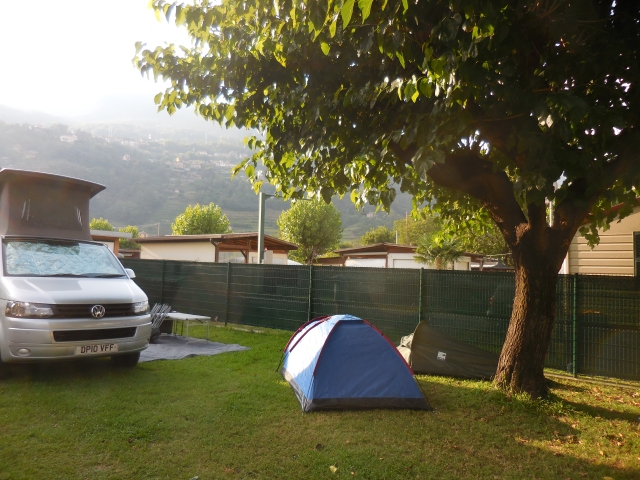
Fortunately these more expensive countries are well-developed with large and varied hostel networks and decent budget. You can also find some decent listings on Airbnb and couchsurfing (although we found that couchsurfing didnt work well with three people). As expensive as Israel was, the door to stay in an amazing apartment for $25/night (for all three of us) opened up. We stayed there, in the heart of Jerusalem no less, for a month, spectacularly enjoying our time and saving a ton. The hard part was giving it up.
Your average cost drops to about $5-10 per night in South East Asia. I spent many weeks in Thailand paying $5.5 for a night’s rest. It wasn’t luxury, but it was altogether decent. You can always go another step down for a super cheap bed, but it’s almost always worth spending an extra few dollars for a cleaner bathroom.
Throughout much of Asia, you can bargain for your bed. Showing up and looking around instead of booking ahead online has gotten us great deals.



The cheapest I ever paid was in Laos: $3.
There are plenty of options out there: from getting a job in a hostel, writing a blog review for a free night’s stay, to housesitting, to volunteering with housing included, to whatever! You’re really allowed to be creative and find what’s out there. Every now and then, after saving so much in hostels, you can do what we did in Bangkok: stay in a four star for just $42!
These websites will help you too:
hostelworld.com
hotwire.com
tripadvisor.com (for comparing costs)
booking.com
As well as your typical housesitter, volunteering, etc. websites which can be found in a jiffy with a google search.
One of the best things you can do for monthly apartment rentals is to join expat facebook groups for the area you are going to. They are usually full of useful, local, and up-to-date information.
USA: In the USA, you’d be hard-pressed to find anything decent for $30/night or less. Hostels haven’t really made it there yet. Housing and rental prices vary greatly based on location, but if I had stayed in Raleigh I surely would have been paying far more after my electric and water-heating bills.
Food

Besides accommodation, food is a heavy hitter in the field of expenses. The communal kitchens in hostels in Israel and Europe were fantastic and a real solution to the expensive restaurants. Deals and savings were always to be found in the grocery stores and local markets.
In Italy, instead of hitting up one of the million over-priced, but tempting, gelato stands, we found the best gelato ever for a fraction of the price in a grocery store.
In Paris, we survived off of fruit, fresh baguettes, scrumptious cheese, and spaghetti from the grocery store. Our hostel provided breakfast. It seemed everyone in our hostel had the spaghetti idea. One night I made mine after a guy made his, then two more groups of friends came down and all made spaghetti too. We basically had a little spaghetti party; it was great.

South East Asia tells a different story. Considering that I am paying $7 for my hostel here in Bangkok and can go and get a tasty plate of Pad Thai for $1, you don’t have to worry about cooking so much. Finding those good places with non-spicy food and good prices can take some effort, but they are there. Hostels in SE Asia rarely have kitchens, perhaps for this reason.

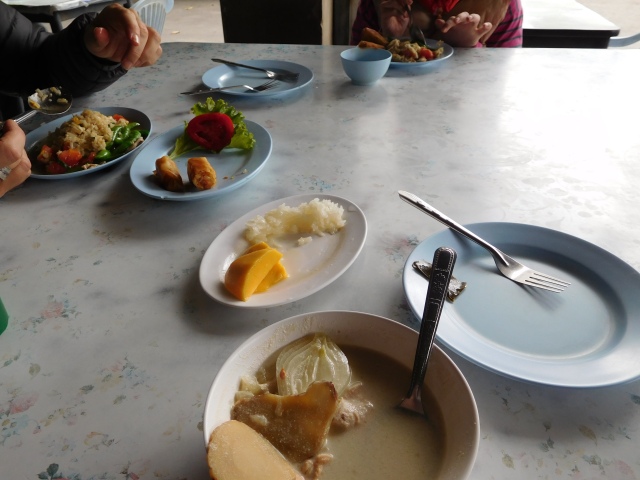

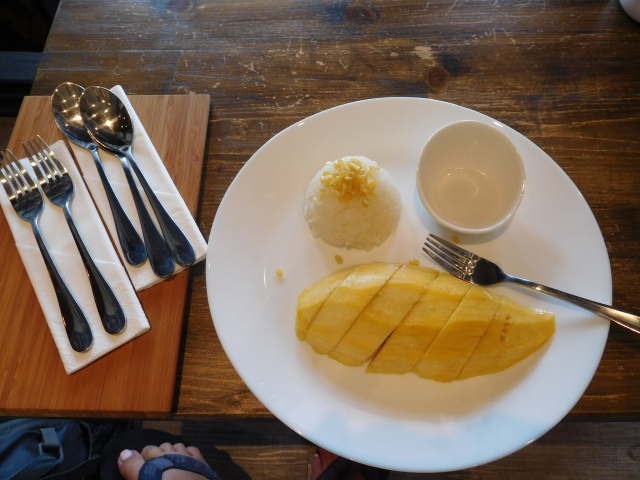
No matter where you go, you always save when you stay away from Western food and restaurants aimed at tourists. A well-known blogger, Nomadicmatt, always walks several blocks away from any touristic attractions before looking for food. The prices drop significantly.


USA: The same basic rules apply in the US: eat out, spend more; cook your own food, spend less. I haven’t found anything abroad to rival Costco. Food prices for the quantity you get tends to be of the best in the USA, I think. But nothing compares to the prices in Southeast Asia. It’s amazing what local people live on. I’ve personally enjoyed trying all the different kinds of fruits and foods I’d never experienced at home. So there’s always that.
Clothing
I dislike shopping, but here we go. 🙂

Abroad: Clothes are dirt cheap in South East Asia and you can pick up a convincing fake of just about any major brand. In countries like Vietnam, clothes can be tailored with true craftsmanship quite inexpensively. The fun part about travel shopping is being able to buy things were they are made.

I last bought two shirts in Cambodia for $2 and $7. The pricier one was bought from an organization that employed women and taught them clothes-making and sewing skills so they could support themselves. Each woman signed her name on the tag of the item she handmade.
After the first three months of travel, I had grown so tired of seeing my same five shirts over and over that I went on a shopping spree in Milan, Italy. Thanks to a major sale going on at OVS on Buenos Aires, I bought shirts for 3 euros each and pants for 7 euros. I can handle shopping like that.
Turkey is world renown for making good shoes. I picked up a pair of handcrafted flats which have been lasting wonderfully. When touring the countries that make the clothes, you’re set up in a good situation!

USA: With stores like Marshall’s and TJ Maxx, you can pretty easily find good deals on quality clothes in the US too. Not a lot of clothes fit in my backpack though, so I’m saving a serious amount by not having a closet.
Transportation:

Train, bus, boat, ferry, plane, tuk tuk, songthaew, camel, motorbike, metro, subway, taxi, walking, running, skipping, hopping, these are a few of the ways my family and I have gotten around this past year. You’ll notice one very popular method is missing: car.


USA: My mom and I both sold our cars before leaving the US. As everyone who owns a car knows, cars are suckers, useful money suckers, but vacuums nonetheless. What I save on insurance, gas, repairs, and maintenance, I put towards getting myself all around the globe.

The flight to kick off our world travels went from North Carolina to Tel Aviv, Israel for a startling $500. Our initial investment was not to be repeated. Once reaching the Eastern side of the world, we’ve hopped about quite inexpensively.
Skyscanner.com and hotwire.com have been fantastic for. It certainly helps when you can be flexible and put “everywhere” as the destination and look at prices for a whole month.
Megabus, a British bus company that services major cities in Europe, was a great wallet-saver. If you book far enough in advance, they sometimes have major city to city buses for 1 pound.
In Spain, we got from Barcelona to Malaga, a 15-hour bus ride, for 32 euros each. My Spanish friend let me in on a trick to get the Alsa bus company’s cheaper prices. One draw-back is that Alsa doesn’t accept credit cards from the US on their website. My Spanish friend paid with his card until I could give him back the cash in person.

Every country we have been in has had wonderful and affordable transportation, whether it be great buses, a train running the length of the country as in Thailand and northern Italy, or mini vans and intercity metros. Bali was really the only place that we had to use taxis, and at the border in Jordan where the taxi mafia awaited us.
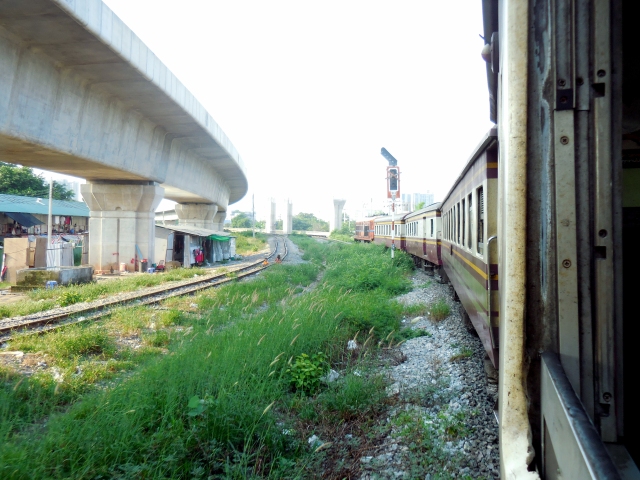
Grace especially loves all modes of transportation. It lights up her day. It’s been a new thing for both of us, as we come from the outskirts of a city in the US where public transportation is nonexistent. If you want to get somewhere you can walk, bike, or drive. Figuring out all these metro and bus systems has been great fun.

Public transportation usually means accessible transportation to many people- the public- and seeing as your regular Joe likes to budget like me, public transportation usually means affordable transportation. Do like the locals do.

It definitely wins out over the expenses of a car.
Activities

This one is really up to the values and bucket lists of each traveler. Much would be lost if one traveled the world without taking part in some incredible, one-chance-only experiences just to pinch a penny. But there’s also a trade off involved when being fiscally responsible with a small budget.
When we were in Vang Vieng, Laos, for example, a popular activity was taking a kayak down the large river that cut through town. It looked like fun, but it was also a bit overpriced. My mom made the intelligent observation that we could save our money to do the same activity in a place like New Zealand. There the water would be infinitely cleaner and the safety equipment in good shape (we read terrible reviews about the broken gear in VV.)

I’ve thus far splurged on a hot air balloon ride over gorgeous farm land in New Brunswick, Canada, stayed for a week on safari in South Africa’s Kruger Park, obtained my openwater scuba diving certificate on Koh Tao, Thailand, and hiked a day away in wonder through Petra, Jordan. I’m richer for all of those experiences. Everything else we have done and see through 17 countries hasn’t been budget busting.





But there are many real adventure enthusiasts out there. Others may have many more of the thrilling type of experiences they’d like to check off the list. I believe a lot of it is possible. You just have to find a way to pinch and save in a different category or maybe work in a hostel for a while.
Travel, afterall, is usually only achieved by sacrificing and working for it. Travelers at heart always find a way.
USA: What’s there to do in North Carolina anyway?
Visas and ATM Fees
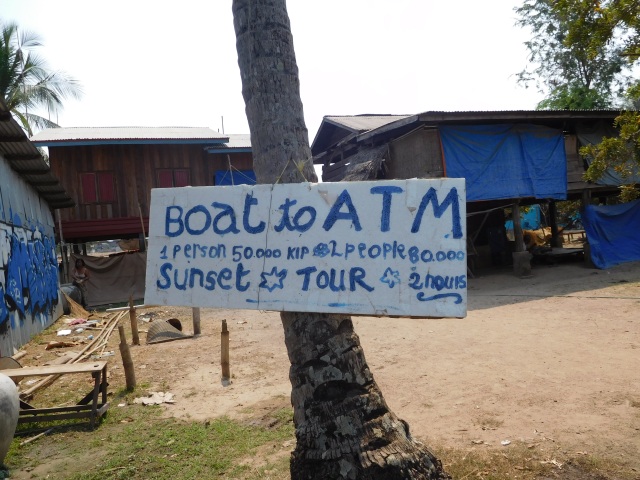
Visas are annoying and so are ATM fees. Especially the greedy bank ATM fees. Thankfully, the US passport gets you into many countries without a visa, or at least with relatively little hassle. That’s my travel privileged based on where I was born. I’ve heard the stories of people from Egypt, India, the Philippines and other places who have faced much more struggle, and even rejection, when trying to visit various places.
A tourist visa doesn’t necessarily always cost money. A free stamp from Europe gives you leave to travel around Europe for three months, and then you have to move on. Turkey, Laos, and Cambodia all required us to pay a visa fee. Cambodia came out to be the most expensive as the charge, after the included bribe fees for the officials at the border, cost us roughly over a dollar a day for our one month tourist visa.
Smart people have some system or fancy card to save them from nefarious, odious ATM withdrawal fees, but we don’t. That fact has cost us a pretty penny, especially in places like Thailand where each withdrawal costs $6. We thought we would be able to optimize the use of our travel credit card, but cash has proven king time and time again. Most countries don’t give you an option for credit card. Even if you get lucky enough to use your credit card, beware of the exchange rate the cashier chooses. Always choose your home currency.
USA: US wins this one. Credit cards are used and preferred just about everywhere.
Medical Expenses
I spent $100 on medical expenses this year. $50 went to the ear doctor in Indonesia. If you’re curious as to what that experience was like, you can read about it briefly here.
The other $50 went to the dentist in Bangkok for the yearly check up and cleaning. Exciting.
Both experiences were positive and quite satisfactory.
We’ve also found that you can pick up a wide variety of medication over the counter for no more than several dollars. Although, the way strong drugs are handed out without proper diagnosis at times is a bit concerning. Medication at home can easily, and is most commonly, priced in the hundreds to thousands of dollars range.
Sure beats dealing with obamacare.
USA: I don’t think I could ever afford going to the doctor under the Affordable Care Act. Doctors don’t like it either.
I’ve grown, experienced, and learned so much this past year abroad. I wouldn’t trade it. But it’s always nice when life changing opportunities are affordable too. Here’s to the knowledge that you can successfully travel on $30/day. Because if I can do it, of course others can too. 🙂 (And many are!)


You are opening my mind about another way to live the life.
That’s great!